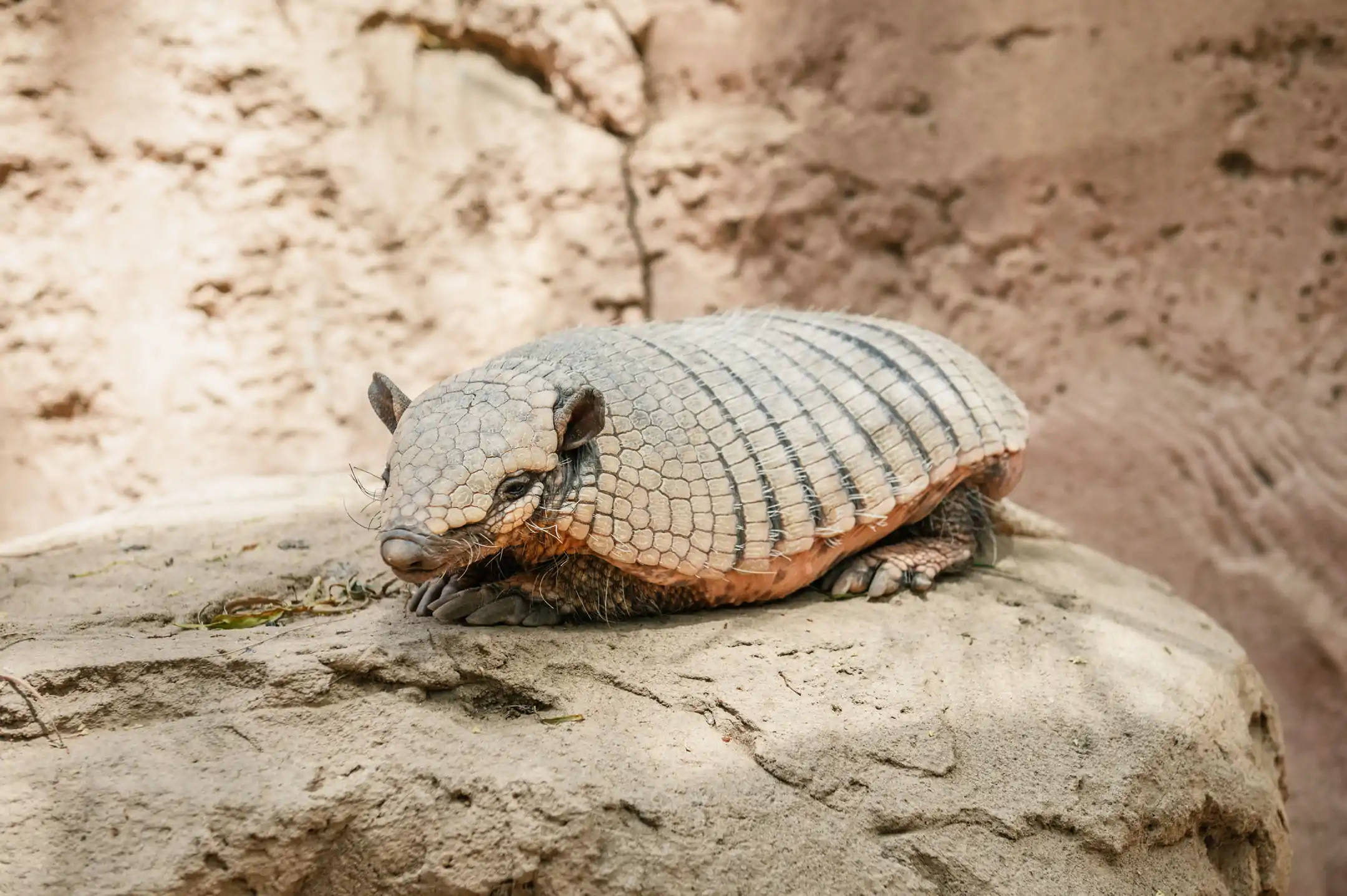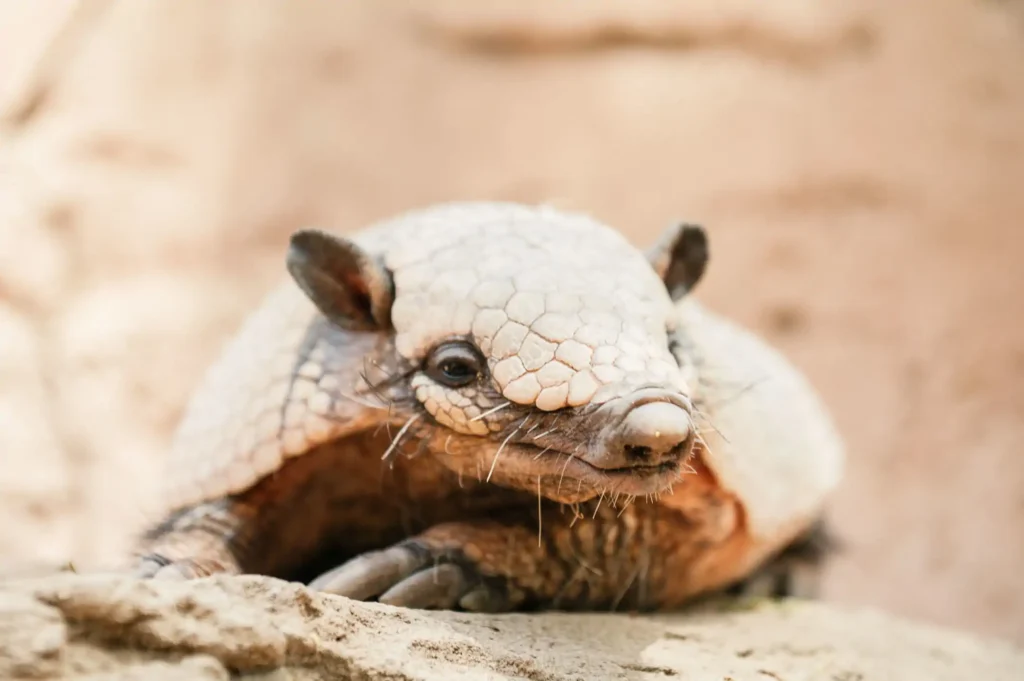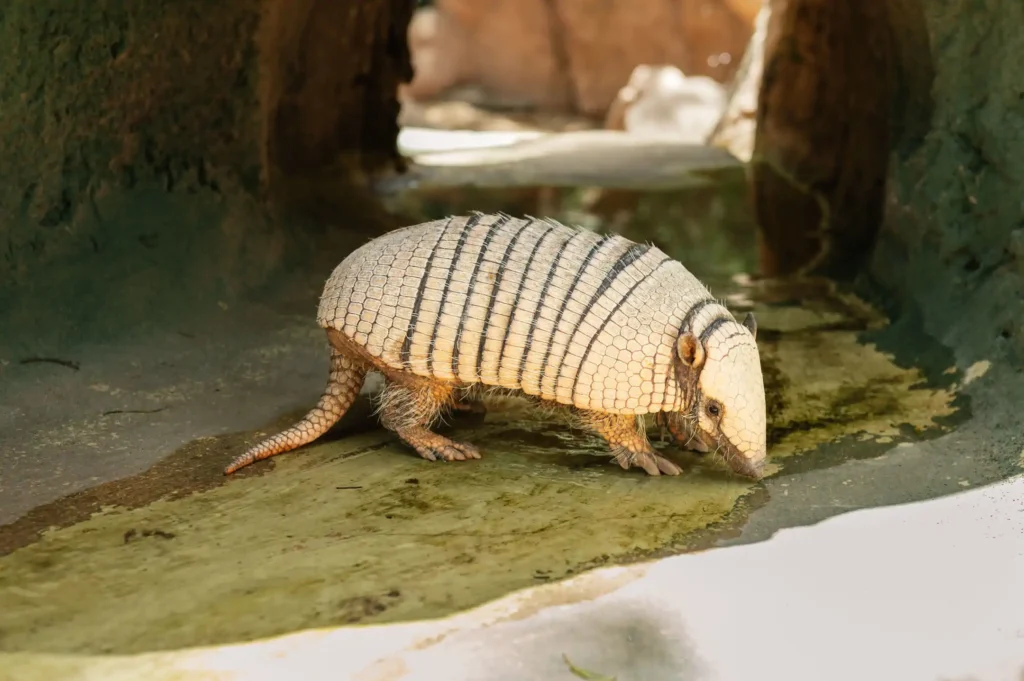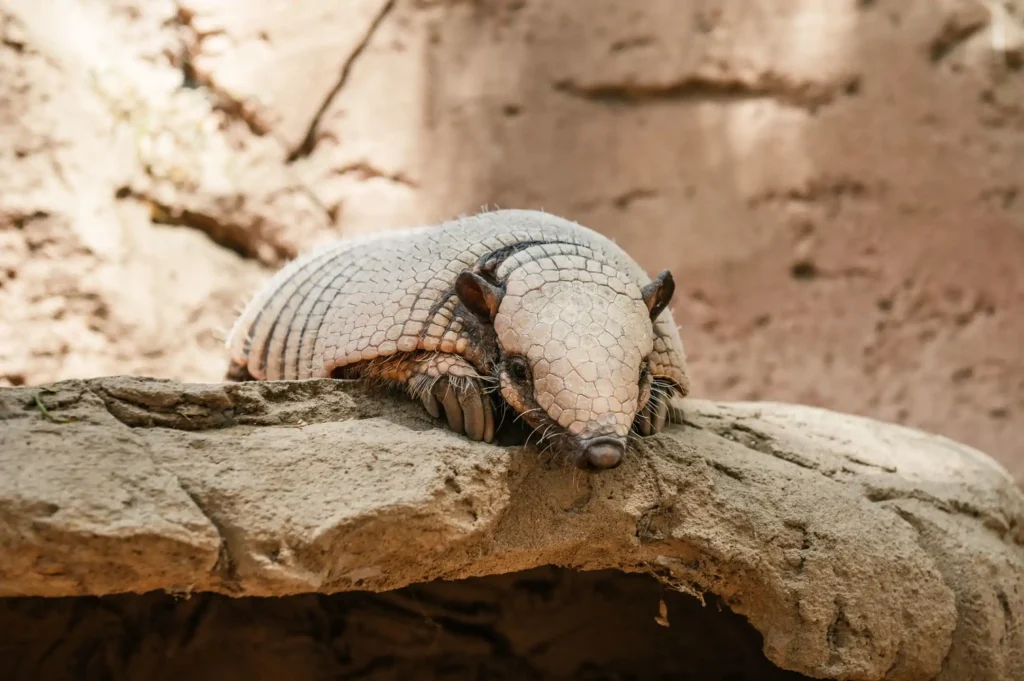Edentulous mammal with dorsal armour, formed of overlapping scales which are organized in transversal lines. The armadillo has a large tail and short legs. The members of the Dasypodidae family have received different names, the most common is “armadillo”; they are also known as (sometimes depending on the species) “quirquincho” (from the Quechuan word “khirkinchu”), “cusuco”, “pichi” (in Chile), “mulita”, “tatú”, “gurre”, “cachicamo”, “toche”, “pirca” (“furry” in Argentina) or “cachicamo” in Venezuela. The most common species is the Nine-Banded Armadillo, which is the sole resident armadillo in the United States of America, mainly in the southern states. This species is, together with the Cabassous centralis, the only member of the Dasypodidae family which is found in habitats outside of South America, where all of the other species are found and where their origin lies, as fossils have demonstrated.
Main characteristics
The Dasipodidae are mammals that can be easily recognized due to their armour of dental bone, which is their main protection. They look similar to the pangolins, African and Asian mammals, which are also covered with big scales or plates and their habits are alike. This is why during some time they where classified as members of the same order, although now research has demonstrated that they are not related. The armadillos belong to the order (or superorder) Xenarthra, while the pangolins rank among the order Pholidota.
In Central America, especially in El Salvador, in the city of San Alejos in the department of San Miguel, the armadillo known as “Cusuco” is eaten by the local population, in spite of being related to leprosy (the skin of the armour seems to contain it).
The important city of Ayutuxtepeque owes its name to the armadillo. The term Ayutuxtepeque means “Mount of Armadillos or Cusucos”. Furthermore, a sports website has been named after the species. The meat of the armadillo is suitable for consumption. It is known as the “meat of seven flavours” due to the fact that it can taste either like chicken, rabbit or pork. The countrymen usually take off the bones and prepare the meat directly within the armour. The meat is eaten either grilled, fried or as a stew. Once fried, the armour can be eaten as well. Its taste is similar to pork rind or pork scratchings.
The armour and tail of the armadillos are used for medical practices; they are toasted and refined to powder, which is boiled in water and drunken by women who expect their first born child in order to relieve pains and incommodities. Furthermore, this powder is supposed to alleviate ear inflammation and earache and, once mixed with armadillo fat, the paste is considered to act against varicose veins. Many countrymen believe that the blood of a recently killed armadillo cures asthma while a hearty draught of Aguardiente camouflages the bitter taste of the blood.
Six-Banded Armadillo, Euphractus sexcinctus
Facts: How are they? Armadillos are related to anteaters and sloths. They have short legs with sharp claws. The head of the Armadillo is covered by an armour and it’s back is protected by plates of dermal bones covered in relatively small, overlapping epidermal scales. Where do they live? They live in many habitats, ranging from cloud forests to tropical high forests and semi- dry areas with spiny bushes. How is the species geographically distributed? It can be seen from the north of Argentina and Uruguay to the south of the United States. What does the species feed on? The armadillo’s diet consists in insects like ants, termites and other invertebrates, but it also includes fruits, berries and mushrooms.





